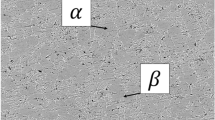Abstract
Owing to the low thermal conductivity and elasticity, cutting burn defect is easy to produce during machining of titanium alloy Ti6Al4V. Firstly, the relationship between the tool wear rate and cutting burn was studied. Nine sets of experiments with different cutting parameters were conducted to obtain the tool wear morphology after different cutting lengths. The tool flank wear and cutting force were measured and collected. Accordingly, the tool wear model formula was built based on the multiple linear regression analysis using the least-squares method. Then, the tool worn model was established according to the experimental tool wear morphology and used in the Deform 3D FEM software to simulate the cutting burn temperature. At last, the cutting burn temperature and its corresponding tool wear were obtained. The results show that the biggest factors that influence the wear rate were cutting speed, feed rate, cutting width, and cutting depth in order, and the cutting burn defect could occur as long as the cutting temperature reached to 1000 °C and the tool flank wear was larger than 0.6 mm.
Similar content being viewed by others
References
Zhu Z, Sun J, Li J, Huang P (2015) Investigation on the influence of tool wear upon chip morphology in end milling titanium alloy Ti6Al4V. Int J Adv Manuf Technol. doi:10.1007/s00170-015-7690-1
Liu H, Sun Y, Geng Y, Shan D (2015) Experimental research of milling force and surface quality for TC4 titanium alloy of micro-milling. Int J Adv Manuf Technol 79(1–4):705–716
Huang P, Li J, Sun J, Ge M (2012) Milling force vibration analysis in high-speed-milling titanium alloy using variable pitch angle mill. Int J Adv Manuf Technol 58(1–4):153–160
Wu H, Zhang S (2015) Effects of cutting conditions on the milling process of titanium alloy Ti6Al4V. Int J Adv Manuf Technol 77(9–12):2235–2240
Nouari M, Ginting A (2006) Wear characteristics and performance of multi-layer CVD-coated alloyed carbide tool in dry end milling of titanium alloy. Surf Coat Technol 200(18–19):5663–5676
Attanasio A, Ceretti E, Fiorentino A, Cappellini C, Giardini C (2010) Investigation and FEM-based simulation of tool wear in turning operations with uncoated carbide tools. Wear 269(5–6):344–350
Pálmai Z (2013) Proposal for a new theoretical model of the cutting tool’s flank wear. Wear 303(1–2):437–445
Hu HJ, Huang WJ (2014) Tool life models of nano ceramic tool for turning hard steel based on FEM simulation and experiments. Ceram Int 40(7):8987–8996
Arsecularatne JA, Zhang LC, Montross C, Mathew P (2006) On machining of hardened AISI D2 steel with PCBN tools. J Mater Process Technol 171:244–252
Jawahir IS, Ghosh R, Fang XD, Li PX (1995) An investigation of the effects of chip flow on tool-wear in machining with complex grooved tools. Wear 184(2):145–154
Sun YJ, Sun J, Li LF, Xiong QC (2014) An experimental investigation of the influence of cutting parameters on cutting temperature in milling Ti6Al4V by applying semi-artificial thermocouple. Int J Adv Manuf Technol 70(5–8):765–773
List G, Sutter G, Bouthiche A (2012) Cutting temperature prediction in high speed machining by numerical modelling of chip formation and its dependence with crater wear. Int J Mach Tools Manuf 54–55:1–9
Zhu D, Li B, Ding H (2013) An improved grinding temperature model considering grain geometry and distribution. Int J Adv Manuf Technol 67(5–8):1393–1406
Shen X, Lei S (2011) Experimental study on operating temperature in laser-assisted milling of silicon nitride ceramics. Int J Adv Manuf Technol 52(1–4):143–154
Sivasakthivel PS, Sudhakaran R (2013) Optimization of machining parameters on temperature rise in end mil ling of Al 6063 using response surface methodology and genetic algorithm. Int J Adv Manuf Technol 67(9–12):2313–2323
Song G, Li JF, Sun J (2013) Approach for modeling accurate undeformed chip thickness in milling operation. Int J Adv Manuf Technol 68(5–8):1429–1439
Lee W, Lin C (1998) Plastic deformation and fracture behaviour of Ti-6Al-4V alloy loaded with high strain rate under various temperatures. Mater Sci Eng A 241(1–2):48–59
Chen G, Ren C, Yang X, Jin X, Guo T (2011) Finite element simulation of high-speed machining of titanium alloy (Ti6Al4V) based on ductile failure model. Int J Adv Manuf Technol 56(9–12):1027–1038
Sun J, Guo YB (2009) Material flow stress and failure in multiscale machining titanium alloy Ti-6Al-4V. Int J Adv Manuf Technol 41(7–8):651–659
Wang B, Liu ZQ (2014) Investigations on the chip formation mechanism and shear localization sensitivity of high-speed machining Ti6Al4V. Int J Adv Manuf Technol 75(5–8):1065–1076
Kheireddine AH, Ammouri AH, Lu T, Dillon JOW, Hamade RF, Jawahir IS (2015) An experimental and numerical study of the effect of cryogenic cooling on the surface integrity of drilled holes in AZ31B Mg alloy. Int J Adv Manuf Technol 78:269–279
Latham DJ, Cockcroft MG (1968) Ductility and the workability of metals. J Inst Met 1968(96):33–39
Shashikant J, Asim T, Suhas J (2015) Microstructural characterization of chip segmentation under different machining environments in orthogonal machining of Ti6Al4V. J Eng Mater Technol 2015(137):1–16
Author information
Authors and Affiliations
Corresponding author
Rights and permissions
About this article
Cite this article
Sui, S.C., Feng, P.F. The influences of tool wear on Ti6Al4V cutting temperature and burn defect. Int J Adv Manuf Technol 85, 2831–2838 (2016). https://doi.org/10.1007/s00170-015-8093-z
Received:
Accepted:
Published:
Issue Date:
DOI: https://doi.org/10.1007/s00170-015-8093-z




